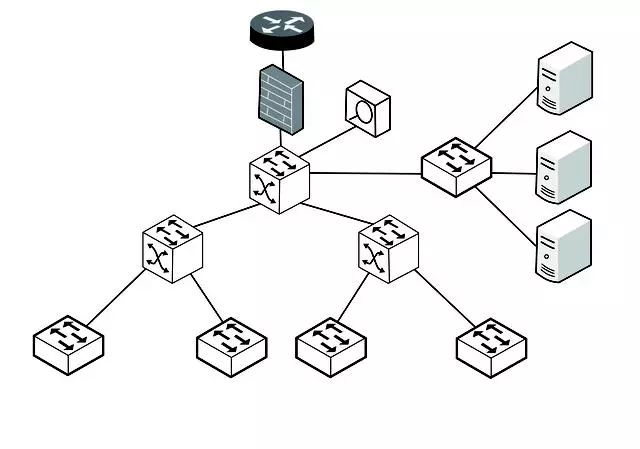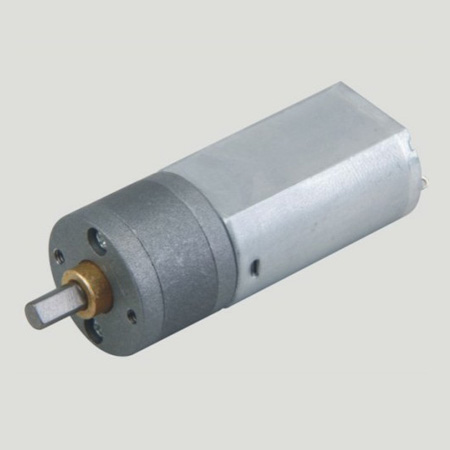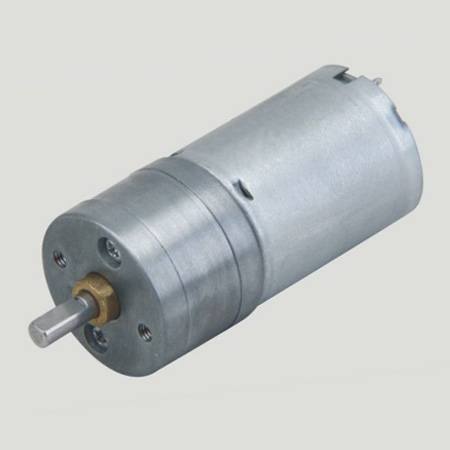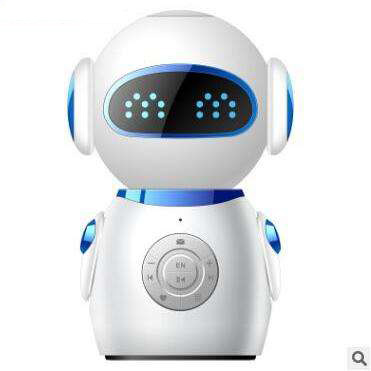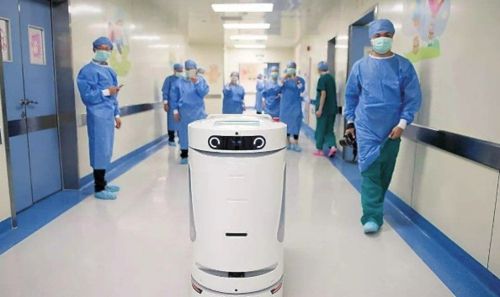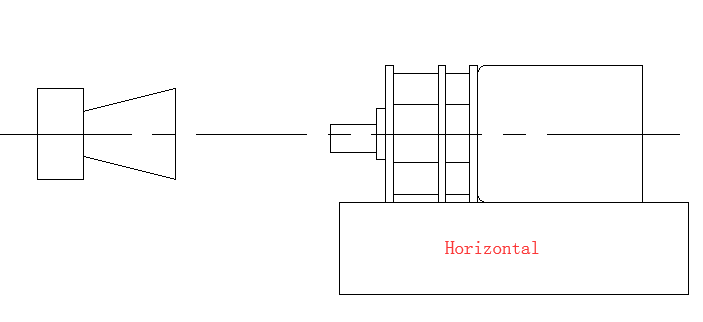Author: Dr. Liu Feng computer "evolution of the Internet." Foreword Since the publication of the paper in 2008, the Internet brain model has been proposed for the first time. This article mainly describes the reasons why we proposed the internet brain model ten years ago; what progress has been made in the field of computers and intelligence in the past decade; in the future, the Internet brain model has been applied to the Internet, artificial intelligence, hybrid intelligence, and smart cities. How to promote the construction of a smart society I. Inadequacies and Defects of Existing Internet Definitions and Models In 1969, the Internet was born in the United States. Since then, the Internet has expanded from four U.S. research institutes to the entire Americas, Europe, and Asia. It has reached the world today. In the application, from the earliest military and scientific research to human life, entertainment, office, social management and other aspects, what is the definition of the Internet? Computer science is generally defined as: The Internet refers to an internet network that connects computer networks worldwide to each other. On this basis, the global Internet that covers the entire world is called the Internet, which is a network structure that is connected together. (The image below is a typical graphical model of the Internet.) Since the Internet entered the 21st century, there has been an explosive growth, including social networks that began around 2000, which has enabled people-to-people communication and social communication. The Internet of Things boom that began in 2009 has made the Internet connect to computers, and it has also begun to connect sensors placed in soils, machines, buildings, and automobiles, as well as sensors for images, sounds, pressure, and humidity. By 2010, the servers in the Internet began to be further concentrated, and there emerged huge server clusters for the government and enterprises to provide big data storage and high-performance computing. This is the emergence of cloud computing. Since then, the mobile Internet, Industry 4.0, industrial Internet, big data, and artificial intelligence have emerged. The Internet has gone far beyond the original definition and model architecture. So what kind of new definitions and new models can reflect the core characteristics and future trends of the Internet. This problem is the purpose and foundation of our research on the Internet brain model in the past decade. Second, the four types of brain phenomenon of the Internet Many people in history have independently revealed that society can be seen as a concept with a nervous system organism. For example, the view that the king is the head and the farmer is the foot can at least be traced back to the ancient Greeks. The famous pioneer of the media field, Marshall McLuhan, in the 1964 book Comprehension of the Medium, mentioned that "in the past thousands of years of mechanical technology, humans have achieved a physical extension of space; in more than a century In the era of electronic technology, humans have extended their own central nervous system globally and further expanded globally." The British philosopher P. Russell wrote "The Awakening of the Earth's Brain - The Next Leap of Evolution" in 1983. He proposed that human society makes the Earth a humanoid brain through political, cultural, and technical connections. The organizational structure is the Earth's brain or the global brain. Pioneers such as McLuhan and Peter Russell have realized that human society and technology are operating in the form of brains. But on the whole, these reflections still belong to the sociological and philosophical level. For the Internet that was born in 1969, after the outbreak of the 21st century, the brain-like characteristics of its technology and applications have gradually emerged, and it has become a new hot spot for science and technology today. From 2005 to 2007, the explosive growth of the Internet at any time, especially the rapid development of the Internet in China, gave us the opportunity to continuously discover the brain-like characteristics of the Internet. Among these, there were four important inspirations that led us to formally publish papers in 2008. New Definitions and Models - Internet Brain Models. 1) In 2005, the Internet was not only connected to computers, but also the inspiration of the linker. In 2005 when we started to study the network economy at the Academy of Sciences. Trying to make a website linking the rich resources of the Academy of Sciences with the scientific research needs of social enterprises and discovering that experts’ knowledge, wisdom, and experience on the Internet has become a new Internet business model by solving problems and turning into commodities for trading. We will The new field is named Witkey mode. After one year’s research, CCTV’s news broadcasts and hundreds of media reports, including People’s Daily, prompted the commercial outbreak of Witkey’s website, including the Pig, the Weiqian.com, and so on. After 10 years, these companies have gone through hardships. Explore, develop into a unicorn enterprise, and form an industry with an annual turnover of over one billion yuan. On the other hand, this study also laid an important foundation for the later proposed Internet brain model. The Witkey model proposes that experts can use the Internet to help businesses and others solve problems and gain wealth. It reminds us that the Internet is not only the networking of computers or machines, but also the networking of human knowledge, wisdom, and even the human brain. 2) In 2006, the discovery and enlightenment of the internet brain neuron network In 2006, the social networks represented by faceboook and QQ began to rise. Through the personal space of social networks, people can communicate with each other, pay attention to each other, and increase friends. Similarly, we discovered that among the Witkey model, the questioner and the respondent also Social networks that form knowledge and smart transactions. When we mapped these social network diagrams in the Witmap - Internet Next Generation Search Engine, we first discovered the characteristics of the neuron network in the Internet. 3) Inspiration of the somatosensory nervous system phenomenon in the Internet-like brain in April 2007 In April 2007, we participated in expert consultations on related projects of the Flood Prevention and Drought Relief Headquarters of the Ministry of Water Resources of China. This project proposes that in China's waters, sensors such as humidity, wind speed, and temperature should be transmitted to Beijing's servers via wired and wireless lines. After processing, regular reports are prepared for use by the state's decision-making agencies. This project is 2 years earlier than the 2009 Smart Earth and IoT boom. It has caused us to notice that the Internet also has features similar to the somatosensory nervous system. 4) Enlightenment of the visual neurological phenomenon in the Internet-like brain in June 2007 In June 2007, the students of the Academy of Sciences discussed the tourism video venture project, and once again observed the brain-like characteristics of the Internet. This project proposes to place cameras in various scenic spots in China such as Huangshan, Dali, Jiuzhaigou, etc., to make real-time images of the scenic spots. Passed to the big screen in the travel agency lobby, allowing visitors to remotely feel the scenic landscape and decide which travel route to choose. Although later because of technical and financial reasons did not succeed, but it should be said that this idea is more advanced, in this year, Google's street view system has also begun to launch, in the world security camera and video observation car. Let the Internet users can watch the scenes and scenery around the world in real time. This project makes us further realize that the Internet also has the characteristics of the visual nervous system. Third, in 2008 proposed the definition and model of the Internet brain In the first half of 2007, it has been felt that there should be new breakthroughs in the understanding of the Internet. However, what is this breakthrough is that it always feels like a layer of window paper. After being inspired by brain-like phenomenon in the Internet field many times. In July 2007, we finally realized that the complete architecture and future direction of the Internet is likely to be related to the architecture of the brain. At the end of July 2007, under the auspices of Prof. Lu Benfu of the School of Economics and Management of the University of Chinese Academy of Sciences, in an internal academic symposium of the Academy of Sciences, we explained to the teachers and students of the Academy of Sciences the phenomenon of brain types of the Internet. And suggested that the future of the Internet will form a highly similar structure with the brain. The teachers and students at the meeting held a lively discussion. Professor Lü Benfu’s comment was: This is a very interesting and meaningful idea, but how to convert from conception to scientific research requires a lot of work. Although the "Schematic Evolution of the Internet" [1] was published on the Sina blog in January 2008, the "Internet Virtual Brain Architecture" [2] in May has attracted attention in the industry, but it has still experienced much in the submission of academic papers. Failures, including NATURE, ACM's academic journals, are now somewhat ignorant and fearless. In September 2008, Professor Peng Yan from the Academy of Sciences of China and I established the online “Science and Technology Papers Online†of China’s Ministry of Education through peer review and formally published “The Evolutionary Trends and Laws of the Internet†[3]. This is an online review journal for rapid reviewers. The first choice is to publish it here. It is also hoped that the model and research direction of the Internet brain will be expounded as soon as possible to the scientific community. In this paper, the model map of the Internet brain is drawn for the first time, and a new definition of the Internet is proposed. In the next 10 years, a complete picture and definition of the Internet's brain has gradually emerged; The definition of the Internet brain: The Internet brain is the brain-like giant system architecture formed during the evolution of the Internet to a direction that is highly similar to the human brain. The Internet's brain architecture has mature brain-like vision, hearing, somatosensory, motor nervous system, memory nervous system, central nervous system, and autonomic nervous system. The Internet brain connects the neural networks of the Internet and various elements of the world through a neuron-like network. The Internet brain drives the recognition, judgment, decision-making, feedback, and transformation of the world through cloud-reflecting arcs driven by crowd intelligence and artificial intelligence. In the past ten to ten years, what progress has been made on the Internet brain model? In March 2009, the paper "The evolution of the Internet from the structure of the human brain" was published in "Ergonomics", and the Internet brain was further elaborated. This is the first official publication of the Internet brain model in paper journals. ã€4】. In the following 10 years, I formed a research team with Professors Peng Yi, Liu Ying, and Shi Yong of the Academy of Sciences, including IJITDM, Complex Systems and Complex Networks, IEEE and other SCI, EI, ISTP, and China’s core journals. The internal academic journals published about 20 related papers and published the monograph "Internet Evolutionism" published by Tsinghua University Press. By May 2018, the overall development of Internet brain model research has six directions. 1). Presenting new Internet definitions and new models - Internet brain models Looking at the gradual emergence of mobile Internet, social networking, Internet of Things, cloud computing, and Industry 4.0, the Internet is not just a network linking computers. It also links people, sensors, cameras, unmanned cars, and so on. At the same time, a brain-like giant system architecture has been formed, and the definition of the brain and the establishment of models for the Internet can be studied for new technologies such as the Internet, mobile Internet, Internet of Things, cloud computing, big data, artificial intelligence, industry 4.0, and edge computing. Provides a unified model architecture [7]. 2) Proposed brain neuron networks and cloud reflex arcs are core elements of the Internet brain model Through the contrastive study of the Internet and neuroscience, we proposed the two most important brain-like structures in the Internet brain model, the Internet-like brain neuron network and the Internet cloud reflection in the 2010 paper “Architecture and Function of the Internet Virtual Brainâ€. Arc [5]. We know that neural networks are the most important structures and functions in the brain. The animal organism is an extremely complex organism. The function of each organ and system is not isolated. They are interconnected and mutually restrictive. To achieve this demand requires that the organism has a unified neural network system. In the Internet brain model, how do we link all social elements (including but not limited to humans, AI systems, means of production, production tools) and various elements of nature (including but not limited to rivers, mountains, animals, plants, and space)? To enable communication and exchange of information between these elements, it is also necessary for the Internet to first realize the brain-like neuron network architecture. The specific implementation method is also proposed. This article can also be implemented through the application layer of a social network or an operating system with social attributes. On the other hand, the phenomenon of neural reflex is one of the most important neural activities in the human nervous system and an important manifestation of life intelligence. It is also very important to study the phenomenon of the neural reflex arc (cloud reflex arc) of the Internet brain, according to the Internet. The difference between the start and end points of the brain cloud's reflex arc is divided into nine types of cloud reflex arcs (as shown below). Whether it is in the internal virtual world of the Internet or in the real world, there are problems in how to discover and select the optimal path and achieve fast, effective, and stable implementation when completing the cloud reflex arc. It will involve graph theory, the Internet node, Layout, communication lines, sensors, etc. This is also the direction for further research. 3) Research on the Construction of Smart City and Smart Society Based on Internet Brain Model From the perspective of the evolution of the Internet brain model, it is proposed that both the smart city and the smart society are the result of the development of the Internet to a certain extent and the in-depth development of human society. Therefore, studying the construction of smart cities and smart society can not ignore the development trend and evolution of the Internet. In 2015, the research team began to publish the paper “The Construction of a Smart City Based on the Internet Brain Architecture†and proposed the concept and definition of the urban brain [8]: The urban brain is the process of urban development accompanied by the development of the Internet, gradually forming its own central nervous system (cloud computing), urban sensory nervous system (Internet of Things), urban motor system (Industry 4.0), urban nerve ending development (edge ​​calculation) , The generation and application of urban intelligence (big data and artificial intelligence), urban nerve fibers (communication technology). Based on this, the two core functions of the city are formed: The first is the urban neuron network system (urban big social network), which realizes the information interaction between people and people, people and things, and things in the city. The second is the cloud reflex arc of the city's brain (clouds and brains) to achieve a rapid and intelligent response to city services. Based on the above-mentioned functions to promote the continuous improvement of urban wisdom. This type of brain-based urban architecture based on the Internet brain model is called the city brain. In April 2018, the research team put forward the understanding and definition of a smart society in the article "The Generation, Construction and Future of a Smart Society, and the Study of the Internet-based Brain Model" [16]: The smart society is the entire human society because of the Internet and its extension products cloud computing, big data, Internet of things, industrial Internet (Industry 4.0), cloud robots, artificial intelligence, the outbreak of edge computing, formed by the brain-like giant system architecture-driven social organization Models, smart society rely on the Internet to form the social brain-like central nervous system, visual nervous system, somatosensory nervous system, auditory nervous system, motor nervous system, nerve fibers, neural network, social cloud reflection arc and so on. Wisdom society links all social elements (including but not limited to humans, AI systems, means of production, production tools) and various elements of nature (including but not limited to rivers, mountains, animals, plants, and space) through a brain-like neural network. Relying on the reflection of arcs in the social cloud to achieve world recognition, judgment, decision-making, feedback and transformation. 4) AI IQ evaluation and extension von Neumann architecture extended from internet brain model In 2012, Liu Feng, a member of the research team, and Shi Yong, a member of the Academy of Sciences, began to consider whether they could evaluate the level of intelligence of the evolving internet brain. By 2014, this research topic will be extended to evaluate the level of IQ of artificial intelligence systems. Establishing a standard intelligent model, proposing any agent, including AI programs, robots, humans, and also Internet brain models, can be described as an integrated system that simultaneously possesses the input, mastery, innovation, and feedback of knowledge, albeit AI's IQ evaluation. Models and methods are not directly related to the Internet brain model, but the Internet brain is the starting point for this research, and it is also an important reason for extending the von Neumann architecture out of cloud storage [9]. The research of AI IQ evaluation conducted a unified test on 50 IQ and 3 different ages of human intelligence in 2014 and 2016. There are 4 related papers, and related research has been covered by the media including CBNC, MIT Technology Review. Reports. 5) Inspiration for Brain Science Research from Internet Brain Models In March 2010, the research team published the paper "Function and Structure of the Internet Virtual Brain" in the journal "Complex Systems and Complex Networks" [5]. In the article, 15 analogies between the Internet and the human brain were proposed, in addition to the Internet's vision. , Hearing, somatic sensation, central nervous system, etc., also listed features such as search engines, social networks, Wikipedia in the brain. In April 2010, the research team completed a psychology experiment on search engine functions in the brain at the Academy of Sciences. The experimental results were published in the official website of the Academy of Sciences and the 2012 Internet Evolution Theory [6]. 6) Exploratory Inspiration of the Internet Brain Model for Biological Evolution In the generation of the Internet brain, we mentioned that the brain-like structure of the Internet is not artificially planned, but is a natural brain-like giant system architecture driven by scientific research and commercial competition. In other words, human society will rely on the Internet to evolve in a direction that is highly similar to the structure of the brain. At the same time, the reference brain system of the Internet brain has shown obvious directionality in the past several hundred million years. If we dissect the human brain, we can find that the human brain contains the mammalian brain under the cerebral cortex and the amphibian animal under the mammalian brain. In the brain, amphibians contain reptile brains under the brain, and reptiles contain fish brains under the brain. In the paper “Algorithm of Intelligence and Intelligence of AI†published in 2016, an intelligent system including the Internet brain, human brain, and AI system was proposed. From the perspective of the extended von Neumann architecture, it can be divided from low to high. It is 7 grades. On April 13, 2016, we put forward the statement “2017 Artificial Intelligence: Technology, Ethics and Law Seminar†jointly organized by the Chinese Academy of Science and Technology Strategic Consulting Institute and the Tencent Research Institute. The evolution of the brain, the evolution of the Internet, and the intellectual hierarchy of intelligence systems all show obvious directionality. For these three areas, their common ground is to carry the knowledge and wisdom of life, and continue to evolve and improve. The promotion and evolution of knowledge and wisdom is the core of biological evolution. It judges the direction of biological evolution and the level of biology from the perspective of knowledge and wisdom. The expansive speed of the biological population knowledge base is the focus of biological evolution. The knowledge base of other organisms has stagnated and turned to a blind alley. As a result, there has been no further change for thousands of years, and it is also in a lower and lower position in the life circle of the Earth. In the past 10,000 years, human beings have continuously expanded and accelerated their knowledge and wisdom, and they have made further huge leaps because of the invention of the Internet and artificial intelligence, and thus obtained the dominance of the natural competition of the earth. †The contribution of this statement “The direction of biological evolution is the key to the development of AI ethics†was published in the Science Network [12] V. Future Research of Internet Brain Models The Internet brain model has been proposed for 10 years since it was officially published. Although some progress and breakthroughs have been made, on a larger scale, there are still a large number of topics that need further study. These include: 1) The Relationship and Intersection of Internet Brain and Agent and Multi-Agent System 2.) Principles and applications of brain-like neurons and cloud reflex arcs in the Internet brain; 3) Research on the integration of the Internet brain with smart cities and smart society; 4) Research on the relationship between Internet brain and biological evolution theory; 5) Research on the relationship between internet brain and neuroscience; 6) Research on the evaluation of brain development in the Internet, 7) Internet brain models and research on the wisdom industry, smart industry, smart military, smart companies, and smart homes. Six, part of the list of articles and papers From 2005 to 2018, there were more than 300 Internet-related articles published in blogs, newspapers, conferences, and periodicals. The following articles selected more important articles for their introduction, reflecting the fact that this study has been gradually deepened from conception to presentation. the process of. The summary address for more articles is at: http://blog.sciencenet.cn/home.php?mod=space&uid=39263 1) On January 2, 2008, “Schematic Evolution of Internet Brains†was published on the Sina blog. The author Liu Feng describes the evolutionary process of forming the brain-like structure of the Internet using nine images. 2) On May 7, 2008, the “Internet Virtual Brain Structure Diagram†was published on the Science Network. Authors Liu Feng, Peng Geng, and Liu Ying elaborated on the generation and architecture of the Internet brain architecture. 3) On September 26, 2008, the "Discovery and Analysis of Internet Evolution Laws" was published online in Chinese scientific papers. Authors Liu Feng, Peng Geng, introduced the discovery process and details of the Internet brain architecture and Internet evolution. 4) On March 15, 2009, "The evolution of the Internet from the structural mechanism of the human brain" was published in the "Journal of Ergonomics". Author: Liu Feng, Peng Geng, Liu Ying 5) On July 10, 2010, "The Cross-Comparison Study of Internet and Neurology" was published in "Complex Systems and Complex Networks" by author Liu Feng. 6) In July 2012, "The Theory of Internet Evolution" was published in Tsinghua University Press, author, Liu Feng, 7) In August 2014, "Structure and Operation Mechanism of Internet Virtual Brain" was published in IEEE International Conference on Computer & Information Technology, author Liu Feng. 8) In February 2015, “Study on the Construction of a Smart City Based on the Internet's Brain Architecture†was published in the CSDN. Author Liu Feng proposed the definition and top-level construction of the city's brain. 9) in March 2015, "World Search Engine IQ Test Based on the Internet IQ Evaluation Algorithms" of Information Technology & Decision Making published in the International Journal, Author: Liu Feng, Shi Yong, Wang Bo 10) In April 2016, "From Robot to Google Brain - 6 Intelligence Levels of Artificial Intelligence" was published in the "Communications of the Chinese Computer Society", author Liu Feng, expounded the expansion of the von Neumann architecture based on the brain inspired by the Internet, and Generates a classification of smart levels. 11) In July 2017, the “Building and Development of the City's Brain†was published in the “Management Blueprint for the Management of the Blue Book of China†published by the Chinese Management Society to illustrate the construction of an urban brain based on the Internet brain. Author Liu Feng 12 In April 2017, “The direction of biological evolution is the key to formulating AI ethics†was published in the keynote speeches of the Academy of Sciences and Tencent “2017 Artificial Intelligence: Technology, Ethics and Law Seminarâ€, and the resulting manuscript was published on the Science Network. .. 13) in August 2017, Intelligence Quotient and Intelligence Grade of Artificial Intelligence in Ann Data Sci published, author: Liu Feng, Shi Yong, Liu Ying grade intelligence division method described mathematically. 14) In September 2017, the English paper “City Cloud Brain, a New Architecture of Smart City Based on the Internet Brain†in the Urban Brain, a New Architecture for Internet-Brained Smart Cities, was pre-printed at Cornell University in the United States. arxiv.org release, author: Liu Feng, Liu Fang Yao, Shi Yong 15) In October 2017, "Analysis of the Relation between Artificial Intelligence and the Internet from the Perspective of Brain Science," "Analysis of the Relationship between Artificial Intelligence and the Internet from the Perspective of Brain Science," in Springer Press. Published by Procedia Computer Science. Author Liu Feng, Li Peijia, Shi Yong 16) in April 2018, "produced intelligence community, the construction and future of Internet-based research model of the brain," published in the Web of Science, Author: Liu Feng 17) May 2018, "City Brain, a New Architecture of Smart City Based on the Internet Brain" published in IEEE CSCWD, author: Liu Feng, Liu Fang Yao, Shi Yong
Gear Reducer Motor is a small precision reducer, and the size and specification can be customized below 38mm. Shenzhen shun cheong electrical co., LTD. 15 years engaged in the design, development, manufacture Dc Gear Motor, products applicable to the smart home, widely used in intelligent robot voice interaction, children's education escort robot, intelligent sweeping machine robot, intelligent robot adaptability, independent motor, intelligent medical robot project.
Application field:
Method of use: the best stable in
horizontal plane, installed on the gear reducer motor output
shaft parts, cannot use a hammer to knock,knock prone to press into the gear
reducer motor drive, may cause damage to internal components, and cannot
be used in the case of blocked.
Operating
temperature range:
Gear reducer
motor should be used at a temperature of -10~60℃.
The figures
stated in the catalog specifications are based on use at ordinary room
temperature catalog specifications re based on use at ordinary room
temperature (approximately20~25℃.
If a geared motor
is used outside the prescribed temperature range,the grease on the gearhead
area will become unable to function normally and the motor will become unable
to start.Depending on the temperature conditions ,it may be possible to deal
with them by changing the grease of the motor's parts.Please feel free to
consult with us about this.
Storage
temperature range:
Gear reducer
motor should be stored ta a temperature of -15~65℃.
In case of
storage outside this range,the grease on the gearhead area will become unable
to function normally and the motor will become unable to start.
Service life:
The longevity of gear
reducer motor is greatly affected by the load conditions , the mode of
operation,the environment of use ,etc.Therefore,it is necessary to check the
conditions under which the product will actually be used .The following
conditions will have a negative effect on longevity.Please consult with us
should any of them apply.
â—Use with a load that
exceeds the rated torque
â—Frequent starting
â—Momentary reversals
of turning direction
â—Impact loads
â—Long-term continuous
operation
â—Forced turning using
the output shaft
â—Use in which the
permitted overhang load or the permitted thrust load is exceeded
â—A pulse drive
,e.g.,a short break,counter electromotive force,PWM control
â—Use of a voltage
that is nonstandard as regards the rated voltage
â—Use outside the
prescribed temperature or relative-humidity range,or in a special environment.
â—Please consult with
us about these or any other conditions of use that may apply,so that we can be
sure that you select the most appropriate model.
when it come to
volume production,we're a major player as well .each month,we rurn out
600000 units,all of which are compliant with the rohs
directive.Have any questions or special needed, please contact us, we have the
engineer group and best sales department to service to you Looking
forward to your inquiry. Welcome to our factory.
Gear Reducer Motor,Reducer Motor,Gear Reducer Stepper Motor,Dc Reducer Gear Motor Shenzhen Shunchang Motor Co., LTD. , https://www.scgearmotor.com
